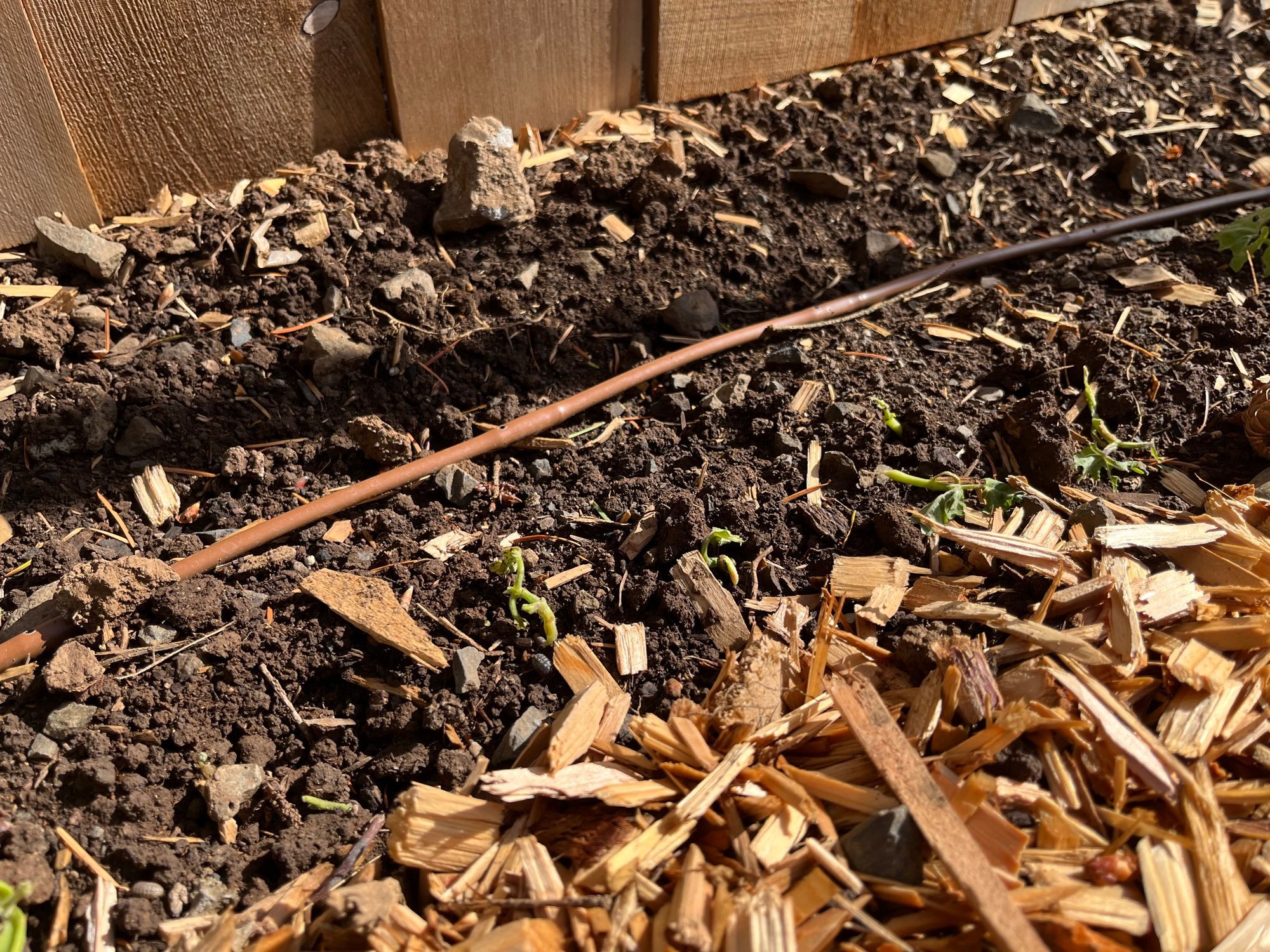Banish the Roly-Poly: How to Keep Pill Bugs from Mowing Down Your Seedlings
Pole bean seedlings destroyed by pill bugs
Few things zap garden joy faster than checking a row of brand-new sprouts—only to find nothing but nibbled stems and empty soil. Pill bugs (a.k.a. roly-polies, sow bugs, woodlice) are usually the cleanup crew of the garden world, feasting on decaying leaves and mulch. But give them a buffet of tender pole-bean cotyledons and they’ll bulldoze their “compost-only” job description overnight.
Below is a step-by-step game plan that pairs prevention with gentle (and, if you must, tougher) controls so you can re-sow beans—or any other vulnerable crop—without hosting another pill-bug party.
1. Know Your Enemy
They’re crustaceans, not insects. Pill bugs breathe through gill-like plates, which means they must stay damp. Target the damp spots and you cut down their habitat.
Night owls. They feed after dark and shy away from light, so “vanishing” seedlings overnight are a tell-tale sign.
Tender-tissue lovers. They prefer fresh sprouts, decaying matter, and over-ripe fruits. Established plants with tougher stems usually survive just fine.
2. Cultural Fixes (Start Here)
Dial back surface moisture.
Water in the morning so topsoil dries by dusk. A drip line or soaker puts moisture at the roots while leaving the surface drier—and less pill-bug friendly.
Tidy the mulch.
Thick, damp mulch right against stems = a five-star roly-poly resort. Rake chips or straw a few inches away until seedlings toughen up (two to three true leaves).
Lift hiding places.
Bricks, overturned pots, and boards near beds turn into daytime bunkers. Store them elsewhere or elevate them a few inches so predators (ground beetles, birds) can reach pill bugs underneath.
3. Physical Barriers
Seedling collars. Cut the bottoms off yogurt cups or use 3–4 in. sections of paper towel tubes, sink halfway into soil around each sprout, and you’ve got a simple fence against pill bugs (and slugs).
Floating row cover or insect netting. Draped over hoops and pinned at the edges, these keep a host of pests off while seedlings toughen up; just lift for weeding or pollination.
Copper tape. Stick it along the rim of raised beds or containers; the slight electric charge deters both pill bugs and snails—as long as no soil bridges across the strip.
4. Traps & Baits (Knock Numbers Down Fast)
Potato & Citrus Traps
Evening: place a half potato, orange rind, or melon peel cut-side down near seedlings.
Morning: flip and scoop up the pill bugs congregated underneath.
Rolled Newspaper / Cardboard Tubes
Moisten lightly, set beside the row, and check at dawn. Shake captives into a bucket of soapy water or feed to chickens.
Beer-Baited Slug Traps
A shallow dish set flush with soil and half-filled with stale beer lures pill bugs as effectively as slugs.
5. Organic “Stop-Gap” Products
Diatomaceous Earth (food-grade): A light dusting around seedlings scratches and dehydrates pill bugs; reapply after rain.
Sluggo Plus: Pellets combine iron phosphate (safe for pets & wildlife) with spinosad to paralyze hungry pill bugs—scatter thinly, don’t pile.
Neem soil drench: Azadirachtin makes new growth unappetizing and disrupts molting; save it for stubborn cases.
6. Chemical Last Resorts
If an all-out infestation persists and you can’t delay replanting:
Carbaryl (e.g., Sevin) Bait — effective but non-selective; harms beneficial ground beetles and is toxic to aquatic life. Use targeted spot applications in the evening, cover treated soil with floating row cover, and keep pets out until pellets dissolve.
Best practice: combine chemical bait with habitat reduction so you don’t need repeat treatments.
7. Re-Sowing Pole Beans Safely
Pre-sprout beans indoors on a damp paper towel until the radicle (little white root) appears. Transplant gently under collars outside—this shortens the vulnerable stage by several days.
Sow extra “sacrifice” seeds at the bed’s edge. If pill bugs linger, they’ll often choose the easiest meal.
Inspect at dusk and dawn for the first week. Hand-pick any culprits you see.
8. Long-Term Balance
Encourage predators.
Ground beetles, centipedes, and songbirds relish pill bugs. A rock pile or small native-grass patch near your beds gives them shelter.Rotate mulch types.
Pill bugs love straw; coarse conifer bark or clean leaf mold tends to be less appealing.Improve drainage.
Raised rows or a layer of washed sand under drip tape keeps the surface drier without starving roots of water.
Wrap-Up
Pill bugs are recyclers at heart, but they’ll turn opportunistic the moment fresh seedlings appear. By pairing habitat tweaks with smart barriers and, if needed, organic baits, you can reclaim your pole-bean row and keep soil health—and the rest of the garden ecosystem—intact.
Got your own roly-poly war story or favorite deterrent? Drop it in the comments on Garden & Gadgets—let’s crowd-source some peace of mind for every sprout struggling to break ground.
Happy gardening, and may your next bean row stand tall!


